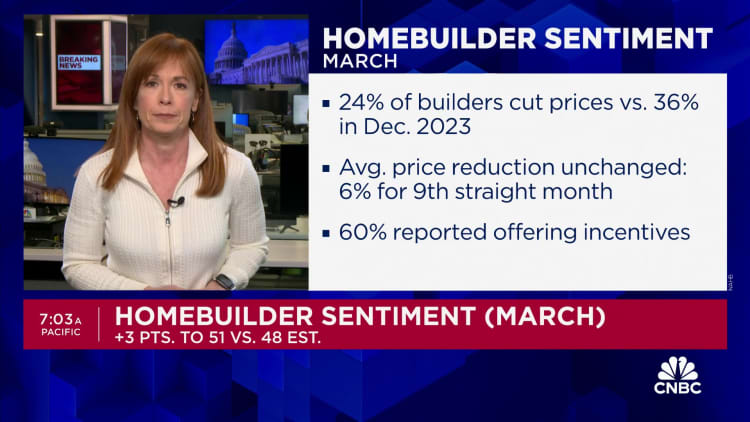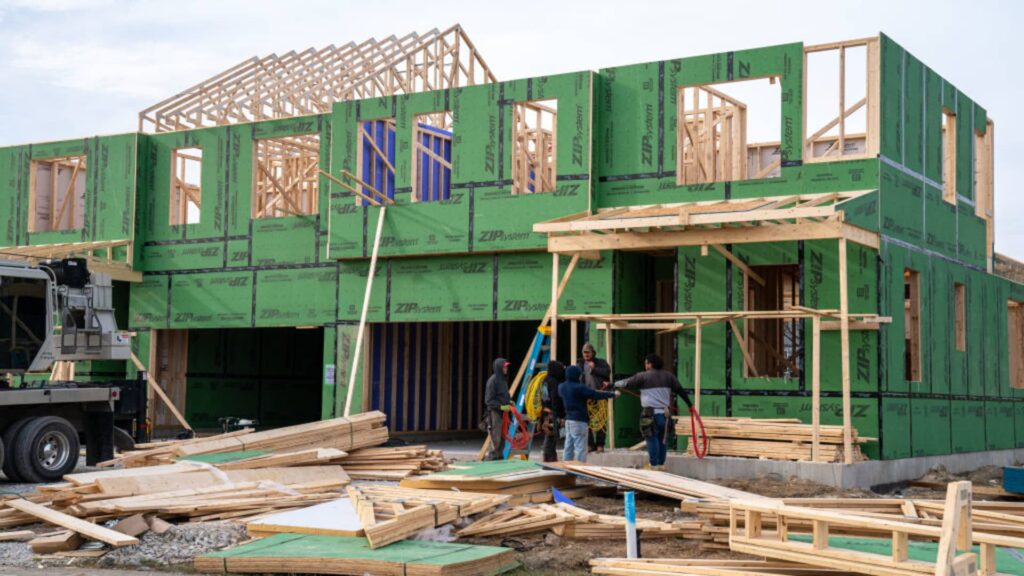
US homebuilders are feeling more confident about their business than they have since last summer, seeing better demand despite stubbornly high mortgage rates.
Homebuilder sentiment rose 3 points in March to 51 on the National Association of Home Builders/Wells Fargo Housing Market Index. The reading rose for the fourth month in a row, reaching its highest level since July.
Sentiment also moved into positive territory for the first time since July. Fifty is the dividing line between positive and negative feelings.
Mortgage rates fell in the first week of March, then rose again in the second week. The average interest rate on a 30-year fixed mortgage has hovered around 7% since early February.
“Buyer demand remains active and we expect more consumers will jump from the sidelines into the market if mortgage rates continue to decline later this year,” said Carl Harris, chairman of NAHB, a custom homebuilder from Wichita, Kansas. . “But despite strong pent-up demand, builders still face many supply-side challenges, including a scarcity of buildable lots and skilled labor, and new restrictive laws that continue to increase the cost of building homes.”
Among the index's three components, current sales conditions rose 4 points to 56, expectations in the next six months rose 2 points to 62, and buyers' movement increased 2 points to 34.
Regionally, on a three-month moving average, sentiment rose most in the Midwest and West
The report also noted that fewer builders are lowering home prices to attract buyers. In March, 24% of builders reported reducing home prices, down from 36% in December 2023, the lowest percentage since July.
The average price reduction remains constant at around 6%. Builders still use sales incentives such as buying low mortgage interest rates.
“With the Fed expected to announce future interest rate cuts in the second half of 2024, lower financing costs will attract many potential buyers to the market,” said Robert Dietz, chief economist at NAHB. “However, as homebuilding activity picks up, builders are likely to face higher material prices, especially lumber.”
